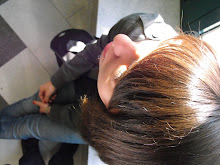These days we heard a lot talking about “death of journalism” and how the traditional, objective and critical journalism is being replaced by commercial and profitable one. That is why I want to point out some rules of journalistic production.
Nick Davies is The Guardian journalist and also the author of the book Flat earth news, in which he stressed the rules of so called »churnalism«. As he pointed out, these rules of production are of course unwritten and unstated and broken by a considerable number of able journalist that for that reason repeatedly run into trouble with media managers. All this rules flow from the two guiding principles in commerce: to cut the costs of production and to increase the flow of revenue.
First five rules that he highlights are set for the purpose of first guiding principle – cutting the costs. The first rule – “Run cheap stories” – simply requires the selection of stories which are quick to cover and safe to publish. Next rule – “Select safe facts” – encourages journalists to favor factual statements which are safe (can be attributed to official sources and for that safe). Third rule suggests to “Avoid the electric fence”, that means to stay in the safe territory and to avoid any problems with those who can endanger news organization. The author points out that the oldest electric fence is media law, nowadays this role is played by lobbying groups. Fourth rule is to “Select the safe ideas” and requires moral and political values to be safe. This means that moral and political ideas generally should not be expressed overtly in the story and they should reflect the surrounding consensus. The last rule in this first group is the rule to “Always give both sides of the story”, which author calls the safety net rule.
Next five rules are set for the purpose of increasing the revenue. So the rule six suggests to “Give them what they want”, which means that stories should increase readership and audience. The seventh rule is “The bias against truth”, which is now entrenched by the news factory’s move towards shoving its stories into smaller packages, stories that should be told fast or the punters will lose interest. “Give them what they want to believe in” is rule eight, which requires that ideas and facts should be selected with commerce in mind. The journalist should be aware, Davies says, that reader is never wrong, and regardless of editorial judgment about what was wrong or right, the paper should feed the values of its consumers. The rule nine is to “Go with the moral panic”, which is to be followed only at times of perceived crisis. The last rule is “Ninja turtle syndrome”, that means media should run stories which are being widely published elsewhere, even if those stories clearly lack merit.
And at this point I cannot avoid thinking – is the same way as Davies describes also in Slovene media sphere? I have to agree and also disagree; some rules are surely followed in several Slovene media but not all. The rules select safe facts, run cheap stories, always give both sides of the story, select safe ideal, give them what they want, give them what they believe in and go with moral panic are rules that can be noticed in several newspapers, web sites , radio and TV stations. But there are also the rules such as avoid the electric fence, ninja turtle syndrome, the bias against truth that I have not come across in our media. Slovenia is too small to have such organizations or laws that build the electric fence that should not be crossed, even if there are some subjects that should be avoided – if you want to have tranquil and peaceful life. Also the ninja turtle syndrome is not all that “popular”, because every media runs the stories that fit its nature the most. For sure Delo, our daily newspaper will not publish the popular, tabloid story, even if all other media would.
However maybe I’m wrong, and the status of the Slovene and world journalism is not bad at all, maybe it is just a phase, and in some years we will see journalism as a profession emerge again.
sobota, 13. marec 2010
Naročite se na:
Objavi komentarje (Atom)

I agree that the future of journalism is quite uncertain and in my opinion question you set is very important.
OdgovoriIzbrišiI read Davies book Flat earth news and I am also not too optimistic about journalism in Slovenia. Traces of “churnalism” are all over the media sphere and are not enough often violated. Economical issues are getting more and more important and will soon overcome traditional journalistic values. Processes of commercialization are blurring the boundaries between entertainment and news, attractiveness and populism are supplanting noble values of journalistic reporting, implication of current economic conditions are evident in the reduction of circulation and available funds and consequently in reduction of editorial. Journalism is under constant tension to ensure a sufficient quantity of news in short time, so they frequently use material and ideas developed by external contractors; news agencies and experts in public relations, which can have commercial and political interests.
Slovene media sphere is affected with “churnalism” trends and I also hope this “phase” will be passed.
Best,
Maja